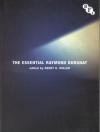Hugo Münsterberg’s ‘The Photoplay: A Psychological Study’ delves deep into the intricacies of early cinema and its effects on the human psyche. Published in 1916, this seminal work explores the impact of moving images on the viewer’s perception, attention, and emotions. Münsterberg, a pioneering psychologist, uses his expertise to analyze the visual and narrative techniques employed in filmmaking, shedding light on the psychological mechanisms at play in the cinematic experience. His insightful observations offer a groundbreaking perspective on the emerging art form, influencing generations of filmmakers and scholars to come. Hugo Münsterberg’s background in psychology and interest in perception and cognition undoubtedly informed his decision to explore the psychological aspects of film in ‘The Photoplay’. As a prominent figure in the field of applied psychology, Münsterberg sought to bridge the gap between science and art, offering a unique perspective on the power of cinema as a medium of expression and persuasion. His interdisciplinary approach paved the way for a new understanding of the impact of media on individuals and society. ‘The Photoplay: A Psychological Study’ is a must-read for anyone interested in the intersection of psychology and cinema. Münsterberg’s groundbreaking insights continue to resonate with contemporary audiences, providing a foundation for further exploration of the psychological dimensions of visual storytelling.
Mengenai Pengarang
Hugo Münsterberg (1863-1916) was a prolific German-American psychologist, often cited as a pioneer in applied psychology, particularly in the realms of clinical, forensic, and industrial realms. Born in Danzig (now Gdańsk, Poland), Münsterberg pursued his doctoral studies under the tutelage of Wilhelm Wundt at the University of Leipzig, a luminary of experimental psychology. Relocating to the United States in 1892, Münsterberg accepted an invitation from William James to join the faculty at Harvard University, where he subsequently led the psychological laboratory. His work was instrumental in bridging the gaps between academic psychology and practical applications in various fields. A foremost thinker, Münsterberg’s interests extended into the analysis of art and media. His seminal text, ‘The Photoplay: A Psychological Study’ (1916), represents one of the earliest comprehensive explorations of the psychological effects of cinema, shaping the theoretical discourse on film as a distinct artistic medium. In this work, he dissected the aesthetic, narrative, and emotional dimensions of the moving pictures, breaking ground that would influence both film criticism and the study of media psychology. Münsterberg’s innovative insights reflect a profound understanding of human perception, cognition, and emotion, underscoring his legacy as a thinker far ahead of his time in the psychological examination of modern cultural phenomena.












